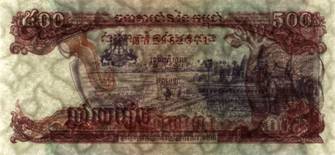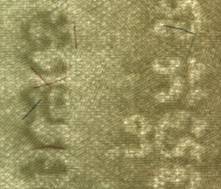WATERMARK
A paper security feature which is visible in transmitted light as an image appeared due to local differences in paper density. A watermark is formed on a wet paper web in the process of paper production. It is formed by the density of fibres on certain areas of an image. Darker areas contain more fibers. Lighter areas contain a smaller amount of fibers. Watermarks differ by several criteria.
By location:
General — an image repeated at regular intervals all over a document page.

Local — an image located in a certain place of a document page.

By general paper tone:



Duotone Single-tone Multitone
Duotone — consists of dark and light elements of an image compared to a general paper tone.
Single-tone — consists of dark or light elements of an image compared to a general paper tone.
Multitone — consists of dark and light elements of an image compared to a general paper tone which are gradually transforming into each other.

Pixel watermark is formed by dark dots on the light background
Highlight watermark (electrotype) is an extremely light clear single tone watermark with clear boundaries
Combined watermark combines several kinds of watermarks
Coded watermark consists of dark and light vertical strips located on the printed area of the banknote (is used as a machine-readable feature)
